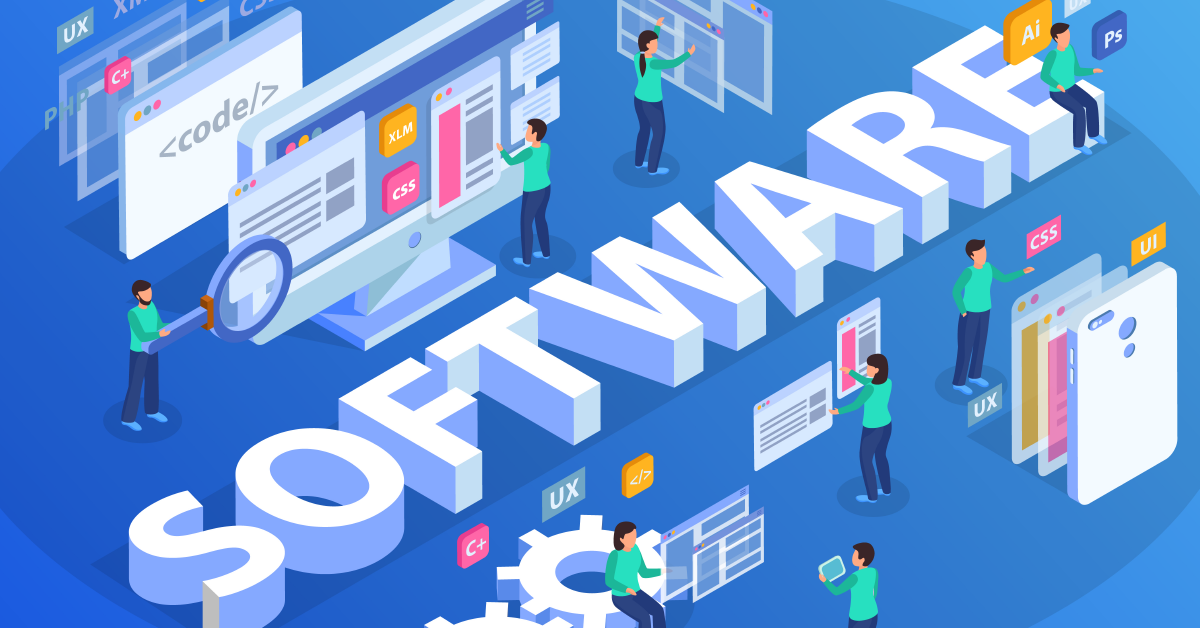Integrating Outsourced Software Solutions into Your Workflow

5 min read
Business are increasingly turning to outsourced software solutions to enhance operational efficiency and innovate at speed. The strategic integration of these solutions into your workflow can open doors to unparalleled growth and agility, but it requires a symphony of collaboration, strategic planning, and mutual understanding between your main team and your outsourcing vendor. In this blog, we’ll journey through the essential steps and considerations for effectively implementing, managing, and optimizing outsourced software development to ensure it becomes a catalyst for success rather than a hurdle.
How do you implement software outsourcing?
Embarking on the outsourcing journey begins with a story of trust and partnership. To weave outsourced solutions into the fabric of your workflows, start by understanding the “why” behind your decision. Is it to accelerate development, access specialized skills, or innovate more rapidly? Identifying your core objectives will serve as the North Star for your outsourcing strategy.
Building a Foundation of Communication:
Like any successful relationship, effective communication is key. Establish clear channels and protocols for regular updates, feedback, and brainstorming sessions. This ensures that the outsourced team becomes an extension of your in-house team, sharing victories and challenges.
Seamlessly Integrating Tools and Processes:
Utilize collaborative tools and platforms that bridge the gap between your team and your outsourcing partner. Whether it’s project management software, code repositories, or communication platforms, the goal is to create a shared space that raises transparency, efficiency, and a unified workflow.
How do you manage outsourced software development?
Imagine the grand stage of software development, where each contributor holds an instrument key to the theme of progress. As the performer, your role transcends mere oversight; it involves inspiring a collective performance that resonates with the harmony of your business goals.
Setting the Stage with Clear Expectations
Crafting the Score:
Just as a performer selects a piece that suits the talent and potential of their orchestra, defining the scope of your project involves preparing a detailed document that outlines not just what but the how and why of your endeavours. This document, akin to a musical score, becomes the shared vision for the project—every note, every rest, meticulously noted to guide the ensemble.
Rehearsing the Performance:
Rehearsals become an essential step with the score in hand. In outsource software development, this translates to regular checkpoints and review meetings. These sessions allow for the fine-tuning of the project, ensuring that each contributor is in sync and the tempo of progress is maintained. Adjustments during these reviews are like a conductor’s subtle cues to the orchestra, guiding them towards a flawless performance.
Fostering a Culture of Collaboration
Soloists and Ensemble Casts:
In an orchestra, while soloists may shine in their moments, the performance’s true beauty lies in the ensemble’s harmony. Similarly, while individual talents are invaluable in outsourced software development, development a culture where these talents complement each other is key. Encourage your in-house team and outsourced developers to interact not just at a task level but at a creative one. Let them share their pleasing interpretations—insights and innovations—that could elevate the project.
Encore! Encore!:
The applause at the end of a well-received performance is a testament to the ensemble’s hard work and synergy. In software development, this applause comes in the form of successful project completion, client satisfaction, and the tangible impact of the software solution. Celebrate these achievements together, reinforcing the sense of unity and shared success.
Innovating on the Fly:
Just as jazz musicians improvise within the framework of their music, encourage your team to be agile and innovative within the project’s structure. This dynamic capability to adapt and innovate can lead to software solutions that are efficient, scalable, and groundbreaking.
By managing your outsourced software development project, with an emphasis on Custom AI App Development, with the same care, precision, and passion as a maestro leading an orchestra, you set the stage for a symphony of success. This approach ensures that your project aligns with your business objectives and nurtures a collaborative, innovative environment that can adapt to challenges and seize opportunities. In doing so, you create more than just software; you orchestrate a masterpiece of technology, with custom AI solutions at its core, that propels your business forward.
Choosing Your Software Outsourcing Partner
The process of selecting the right outsourcing vendor is a key step in the journey of any business seeking to enhance its Software Development Workflow capabilities. This decision goes beyond mere technical skillsets and delves into the alignment of values, vision, and operational ethos between your company and the potential outsourcing partner. It’s essential to look for a vendor with a proven track record of delivering high-quality software solutions and one that embodies reliability and experience. Such a vendor brings invaluable insights and best practices, which can significantly enhance the effectiveness and efficiency of your project.
Moreover, the cultural fit between your business and the outsourcing partner is essential in ensuring a smooth and productive collaboration. A partner with a similar work culture and ethics to your company facilitates better communication, mutual understanding, and, ultimately, a more successful partnership. This alignment is essential, as it goes beyond the mere completion of tasks to stand-in a cooperative relationship where both parties seamlessly work towards common goals.
Therefore, choosing an outsourcing partner wisely involves comprehensively evaluating their expertise, reliability, and how well their organizational culture meshes with yours. Such a partnership elevates the quality of your projects and enhances the collaborative experience, leading to sustained success and growth.
What are the success factors of software outsourcing?
Outsourcing can significantly benefit a company, especially when integrating cutting-edge technologies like AI into its operations. However, the success of such initiatives relies on several key factors. Clear communication is crucial to ensure both the company and the outsourcing partner understand each other’s needs and expectations, particularly when it comes to the complexities of AI integration. Establishing clear goals for what you aim to achieve with outsourcing, including specific objectives around AI integration, and choosing a partner that aligns with your company’s values and technological needs is essential.
Building a solid relationship with your outsourcing partner is vital for managing AI-driven projects effectively and ensuring the high quality of work. This includes maintaining open lines of communication, setting clear expectations for AI implementation, and closely monitoring the integration’s impact on workflows and outcomes. The ability to adjust and scale AI-related services according to the company’s evolving needs is also essential for staying competitive in a rapidly changing technological landscape. Handling risks wisely, ensuring both parties are culturally compatible, and continually looking for ways to enhance AI integration and the overall partnership are key to leveraging outsourcing for AI innovation successfully.
Conclusion
In conclusion, integrating outsourced software solutions into your workflow is not just a transaction—it’s a journey of partnership, innovation, and growth. Your business can meet and exceed project demands by choosing a reliable and experienced vendor, implementing a seamless integration process, and nurturing a culture of collaboration and continuous improvement. The journey to outsourcing success is marked by strategic partnerships with companies like Pranathi Software Services, whose dedication to clear communication, cultural compatibility, and continuous improvement epitomizes the critical success factors essential for transforming outsourcing endeavors into enduring achievements. When traversed thoughtfully, this path leads to a destination where your business can scale new heights, powered by the wings of strategic outsourcing.
FAQ
1. What are the key benefits of outsourcing software development?
Outsourcing software development can offer numerous benefits, including access to a global talent pool, cost savings compared to in-house development, the ability to scale your team quickly, and the opportunity to focus on your core business activities while experts handle your software needs.
2. How do I choose the right software outsourcing partner for my business?
Choosing the right outsourcing partner involves evaluating their expertise, track record, and portfolio of completed projects. Additionally, assess their communication practices, cultural fit with your team, and their approach to problem-solving and innovation to ensure a successful partnership.
3. How can I ensure effective communication with my software outsourced team?
Effective communication can be ensured by establishing clear communication protocols, using project management and collaboration tools, scheduling regular meetings for updates and feedback, and possibly appointing a dedicated project manager to serve as a liaison between your in-house team and the outsourced team.
4. What should I do to manage and oversee the outsourced software development process effectively?
Managing the process effectively involves setting clear goals and expectations, defining milestones and deliverables, employing project management methodologies, and maintaining an ongoing dialogue for feedback and adjustments. Regular performance reviews and quality assurance checks are also vital to keep the project on track.
5. How can I protect my intellectual property (IP) when outsourcing software development?
Protecting your IP involves selecting a trustworthy outsourcing partner with a strong reputation and clear policies on IP rights. Additionally, signing a comprehensive Non-Disclosure Agreement (NDA) and ensuring that all IP clauses are explicitly outlined in the contract can help safeguard your assets throughout the development process.
Published: March 14th, 2024





